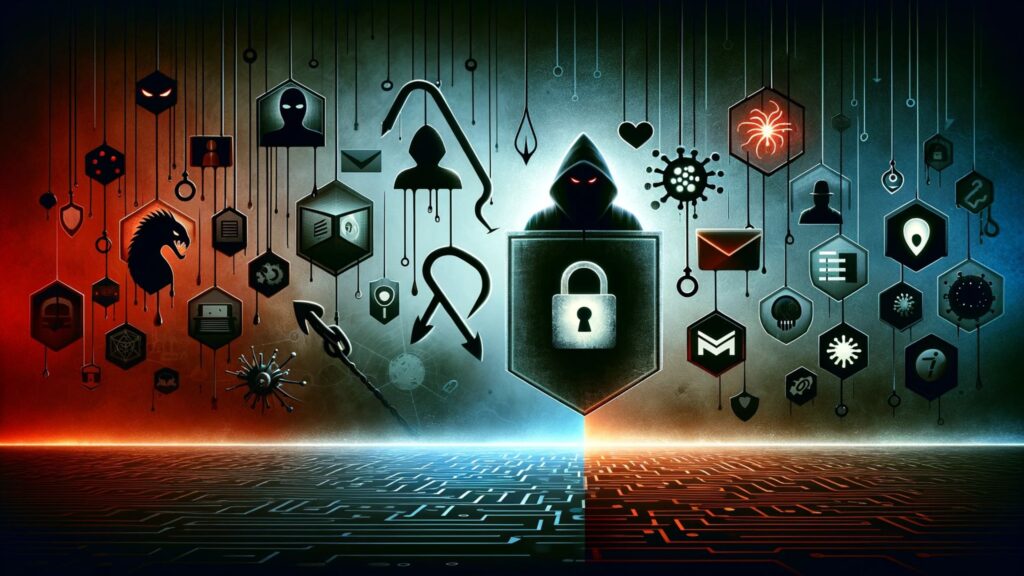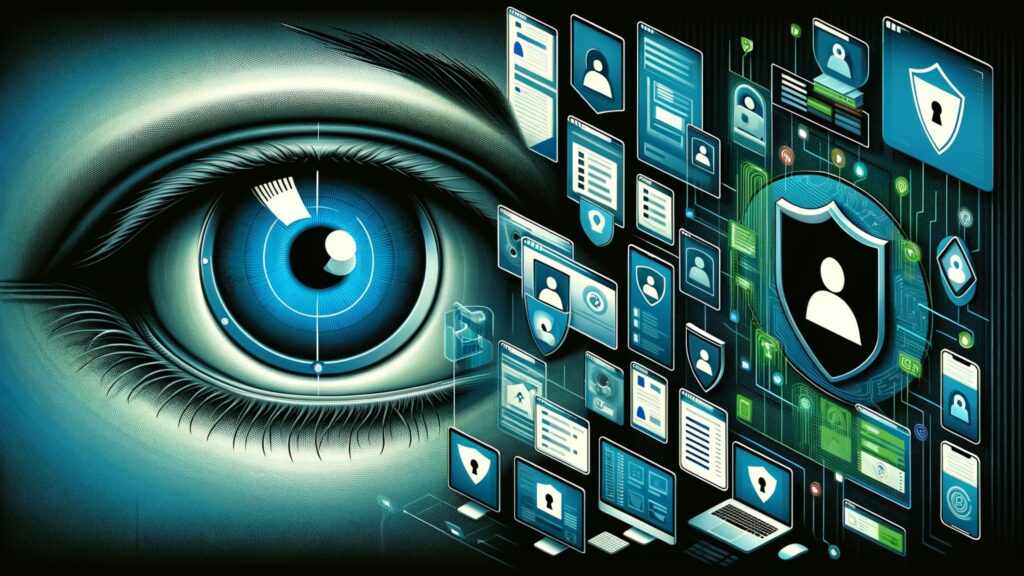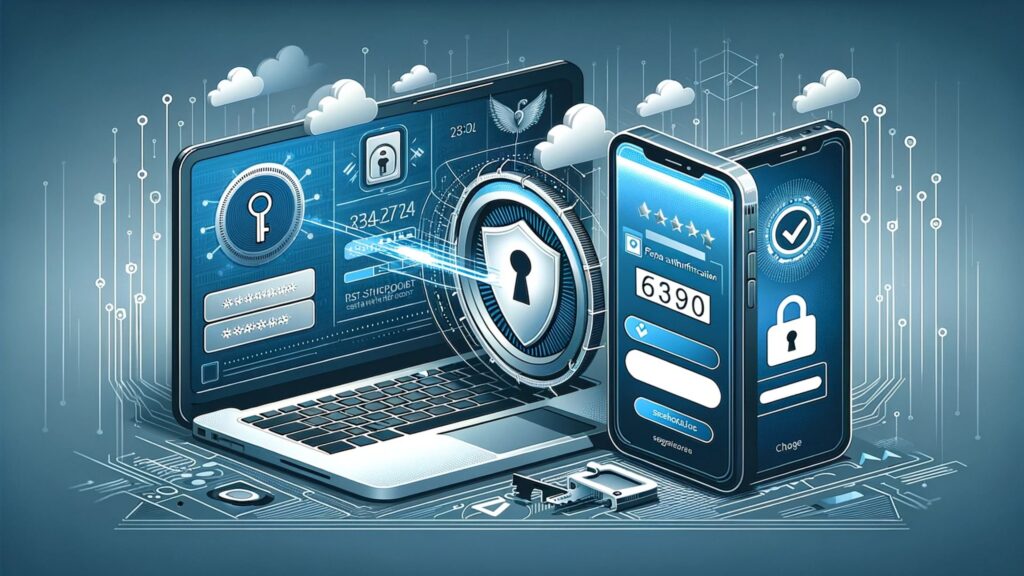In today’s digital age, where our personal and professional lives intertwine seamlessly with online platforms, the importance of securing our online identity cannot be overstated. This article embarks on a comprehensive journey to explore the various facets of online identity security, aiming to equip readers with the knowledge and tools necessary to protect themselves in an increasingly interconnected world.
The Digital Identity Landscape
Online identity, encompassing the sum of personal data and digital footprints we leave on the internet, has become a cornerstone of modern life. From social media profiles to financial transactions, our online presence is a mosaic of personal information, preferences, habits, and interactions. In this context, the security of our online identity is not just a matter of personal privacy but also a crucial aspect of overall cybersecurity.
Why Is Online Identity Security Critical?
- Privacy Protection: Every digital action, from browsing to shopping, leaves traces that form our digital identity. Protecting this identity ensures that our personal information remains confidential and is not misused.
- Preventing Identity Theft: Cybercriminals can exploit weak online security to steal identities, leading to financial fraud, damage to reputation, and legal complications.
- Safeguarding Financial Information: Online banking and shopping involve sharing sensitive financial data. Effective security measures are essential to prevent unauthorized access and financial loss.
- Personal Safety: Cyberstalking and harassment are real threats in the digital space. Secure online practices help in safeguarding against such risks.
- Professional Reputation: In a world where employers often screen candidates’ digital footprints, maintaining a secure and positive online identity is crucial for career prospects.
The Evolution of Online Threats
The methods used by cybercriminals have evolved, becoming more sophisticated over time. Phishing scams, malware attacks, data breaches, and ransomware are just a few examples of the threats that lurk online. Understanding these threats is the first step towards developing a robust defense mechanism.
The Role of Individual Responsibility
While technology and cybersecurity measures play a pivotal role in protecting online identities, individual awareness and proactive behavior are equally important. Simple actions like being mindful of the information shared online, recognizing suspicious online behavior, and using strong passwords contribute significantly to online security.
Understanding the Risks

In this section, we delve into the realm of online threats, shedding light on the common dangers that jeopardize our digital identity. By understanding these risks, we can better prepare ourselves to confront and mitigate them effectively.
The Spectrum of Online Threats
- Phishing Scams: These are deceptive attempts to obtain sensitive information by disguising as trustworthy entities in electronic communication. Phishing often involves emails that mimic legitimate organizations, urging the recipient to enter personal details on a fake website.
- Identity Theft: This occurs when someone unlawfully obtains your personal information (like Social Security numbers, bank account details) to commit fraud or other crimes. The consequences can range from financial loss to legal issues.
- Data Breaches: When secure or private/confidential information is released to an untrusted environment, it’s known as a data breach. These incidents can expose a vast amount of personal data, including passwords and credit card numbers.
- Malware Attacks: Malicious software, including viruses, worms, and trojans, can be used to disrupt or gain access to personal computers and networks, often leading to data theft or damage.
- Ransomware: A type of malware that threatens to publish the victim’s personal data or perpetually block access to it unless a ransom is paid.
- Social Engineering: Techniques used to deceive users into revealing confidential information. It relies more on human interaction and often involves manipulating people into breaking normal security procedures.
The Cost of Complacency
The aftermath of falling victim to these threats can be severe. Beyond the immediate financial loss, the long-term effects can include damage to your reputation, emotional distress, and the time and effort required to rectify the situation. Furthermore, the ripple effect of a single compromised account can extend to your professional life and even impact your social circles.
Proactive Prevention: The First Line of Defense
Understanding these risks highlights the importance of proactive prevention. In subsequent sections, we will explore the critical measures you can take to fortify your online presence, ranging from strong password practices to careful navigation of public Wi-Fi. By remaining vigilant and informed, you can significantly reduce the likelihood of falling prey to these digital dangers.
The Power of Strong Passwords
The third step in securing your online identity is understanding and implementing the power of strong passwords. Passwords are the first line of defense against unauthorized access to your personal and professional accounts. In this section, we delve into best practices for creating and managing passwords that can effectively shield your digital presence from cyber threats.
Why Strong Passwords Matter
- Barrier Against Unauthorized Access: A strong password can significantly reduce the risk of unauthorized access to your accounts.
- Protection Against Brute-Force Attacks: Complex passwords are less susceptible to brute-force attacks, where hackers try numerous combinations to crack your password.
- Safeguarding Sensitive Data: In the event of a data breach, strong passwords can help protect your sensitive information from being easily compromised.
Characteristics of a Strong Password
A strong password typically includes a mix of the following elements:
- Length: Aim for at least 12 characters. Longer passwords are harder to crack.
- Complexity: Combine uppercase and lowercase letters, numbers, and symbols.
- Unpredictability: Avoid common words, phrases, or easily guessable information like birthdays or pet names.
- Uniqueness: Use a different password for each of your accounts.
Managing Your Passwords
- Password Managers: Tools like LastPass, Dashlane, or 1Password can generate, store, and fill in your passwords automatically. They encrypt your password database with a master password – the only one you need to remember.
- Regular Updates: Change your passwords periodically, especially for sensitive accounts like email and banking.
- Two-Factor Authentication (2FA): Where possible, enable 2FA. This adds an additional layer of security by requiring a second form of verification (like a text message or an app notification) in addition to your password.
Navigating Public Wi-Fi and VPN Use

The fourth step in securing your online identity revolves around the judicious use of public Wi-Fi and the strategic implementation of Virtual Private Networks (VPNs). This section explores the risks associated with public Wi-Fi and illustrates how VPNs can serve as a shield, safeguarding your online activities.
The Risks of Public Wi-Fi
Public Wi-Fi networks, commonly found in cafes, airports, and hotels, are convenient but often not secure. The open nature of these networks makes them a hotbed for cyber threats. Here’s why:
- Unencrypted Networks: Many public Wi-Fi networks do not encrypt the data being transmitted, making it easy for hackers to intercept sensitive information.
- Rogue Wi-Fi Networks: Cybercriminals can set up fake Wi-Fi hotspots, tricking users into connecting and then stealing their data.
- Man-in-the-Middle Attacks: Attackers can intercept data transferred over the network, including login credentials and personal information.
The Protective Role of VPNs
A VPN creates a secure tunnel between your device and the internet, encrypting all data that passes through. This encryption helps protect your information from being intercepted. Here’s how a VPN enhances your online security:
- Data Encryption: VPNs encrypt your internet connection, making it difficult for hackers to decipher your data.
- Anonymity: VPNs mask your IP address, helping to keep your online actions anonymous.
- Secure Access to Sensitive Information: With a VPN, you can safely access personal and work accounts, even on public Wi-Fi.
Choosing the Right VPN
- Reputation: Opt for a VPN provider with a strong reputation for security and customer service.
- Security Features: Look for features like strong encryption protocols, a no-logs policy, and a kill switch.
- Performance: Consider the speed and reliability of the VPN service, as well as the number of server locations.
Beware of Phishing Scams
The fifth critical component in securing your online identity is understanding and protecting against phishing scams. This section aims to educate you on recognizing these deceptive practices and adopting measures to prevent falling victim to them.
Understanding Phishing Scams
Phishing is a cybercrime in which individuals are contacted by email, telephone, or text message by someone posing as a legitimate institution to lure individuals into providing sensitive data. This information can include personally identifying details, banking and credit card details, and passwords.
Common Types of Phishing Attacks
- Email Phishing: The most common form, where the attacker sends out emails that appear to be from well-known companies to trick recipients into providing personal information.
- Spear Phishing: Targets specific individuals or organizations. Unlike broad-based phishing, spear phishing messages are tailored to their victims, making them more challenging to detect.
- Smishing and Vishing: Phishing conducted via SMS (smishing) and voice calls (vishing). These scams exploit personal interaction to gain confidential information.
- Whaling: Targets high-profile individuals like CEOs or CFOs. These attacks are sophisticated and involve crafting a scenario that is highly relevant to the target.
How to Identify Phishing Scams
| Indicator | Description | Example |
|---|---|---|
| Suspicious Sender Address | The email address may resemble a legitimate one but often contains subtle discrepancies. | “[email protected]” instead of “[email protected]“ |
| Urgent or Threatening Language | Phishing emails often create a sense of urgency or use threatening language to provoke immediate action. | “Your account will be closed if you don’t respond within 24 hours.” |
| Requests for Personal Information | Legitimate companies rarely ask for sensitive information via email. | Requests for passwords, credit card numbers, or social security numbers. |
| Poor Spelling and Grammar | Professional organizations have editorial standards, so poor spelling and grammar can be a red flag. | Numerous spelling errors and awkward phrasing. |
| Suspicious Links or Attachments | Phishing emails often include malicious links or attachments that can harm your computer or steal information. | A link that doesn’t match the supposed destination, or unexpected email attachments. |
Preventing Phishing Scams
- Be Skeptical: Always question the legitimacy of unsolicited requests for personal information.
- Verify Sources: If an email or message seems suspicious, contact the company directly using information from their official website.
- Use Security Software: Install and maintain anti-virus software, firewalls, and email filters to reduce the risk of phishing attacks.
- Regular Updates: Keep your operating system, browser, and security software up to date to protect against the latest threats.
- Education and Awareness: Stay informed about the latest phishing techniques. Regularly educate yourself and, if applicable, your team or family about these risks.
Regular Monitoring of Your Accounts

The sixth vital step in safeguarding your online identity involves the regular monitoring of your accounts. This proactive approach not only helps in early detection of any unauthorized activities but also plays a crucial role in minimizing the impact of any potential security breach.
The Importance of Account Monitoring
- Early Detection of Fraud: Regular monitoring can help you spot unauthorized transactions or changes to your accounts quickly.
- Limiting Damage: The sooner you detect suspicious activity, the quicker you can take action to prevent further harm.
- Maintaining Accurate Records: Keeping track of your account activities helps in maintaining accurate, up-to-date records, which is essential for dispute resolution.
Key Areas to Monitor
- Bank and Credit Card Statements: Review your statements regularly for any transactions that you do not recognize.
- Credit Reports: Regularly checking your credit reports can help you identify any fraudulent activities, like unauthorized accounts opened in your name.
- Online Accounts: Keep an eye on your social media, email, and other online accounts for any unusual activity.
Handling Suspicious Activity
- Immediate Action: If you detect any suspicious activity, act immediately. Contact your bank, credit card company, or service provider to report the issue.
- Change Passwords: If you suspect your account has been compromised, change your passwords immediately.
- Review Security Settings: Regularly review and update your security settings on online accounts.
- Keep Records: Document any fraudulent activity and your responses for future reference.
Keeping Your Software Updated
The seventh essential step in protecting your online identity is ensuring that all your software is regularly updated. This section emphasizes the significance of software updates in enhancing your cybersecurity.
The Role of Software Updates in Security
Software updates play a crucial role in safeguarding your digital environment. They often include patches for security vulnerabilities that have been discovered since the last version of the software was released.
- Security Vulnerability Fixes: Updates frequently contain fixes for security holes that could be exploited by hackers.
- Enhanced Features: Beyond security, updates can also include new or improved features and better compatibility.
- Performance Improvements: Regular updates can improve the efficiency and stability of your software.
Understanding Types of Software to Update
- Operating Systems: Whether you use Windows, macOS, or a Linux distribution, keeping your operating system updated is crucial.
- Browsers: Web browsers are a common target for hackers, so regular updates are vital for secure online activities.
- Security Software: Antivirus and anti-malware programs are most effective when they are up to date.
- Applications: Regularly update all applications, especially those that handle personal information like email clients and financial apps.
Understanding Two-Factor Authentication (2FA)

Two-factor authentication (2FA) stands as a pivotal enhancement in securing your online identity. It introduces a dual-layered verification process, significantly bolstering your defense against unauthorized access.
The Significance of 2FA
The core value of 2FA lies in its dual-layered approach. Even if a password gets compromised, the second authentication factor crucially blocks unauthorized access, thus greatly reducing the risk of identity theft and unauthorized account use.
Various Forms of 2FA
- SMS-Based and Authenticator Apps: The most common type of 2FA is SMS-based, where a code is sent to your phone. However, for enhanced security, authenticator apps like Google Authenticator provide time-sensitive codes, offering a stronger alternative.
- Physical Security Keys and Biometric Verification: Physical security keys (e.g., YubiKey) offer a highly secure method by requiring a physical device to access accounts. Biometric verification methods like fingerprint or facial recognition are becoming popular for their unique security and convenience.
Implementing 2FA in Your Digital Life
- Setting Up 2FA: Enabling 2FA involves a few simple steps: checking account settings, choosing a suitable 2FA method, and following setup instructions. Testing the setup is essential to ensure it works correctly.
- Best Practices for 2FA Usage: It’s crucial to securely store backup codes and keep recovery information up-to-date. Caution is advised with SMS-based 2FA due to potential interception risks.
Limiting Personal Information Shared Online
In this crucial step of protecting your online identity, we focus on the importance of limiting the personal information you share on the internet. Your digital footprint, which includes all your online interactions, can have lasting impacts and can be exploited if not managed wisely.
Understanding Digital Footprint and Risks
Your digital footprint is extensive and can be a source of risk if personal information like your full name, address, or date of birth is overshared. This can lead to identity theft, targeted attacks, and personal safety concerns.
Strategies for Managing Online Information
Being cautious on social media, thinking critically about what you share, and securing your accounts with strong passwords and two-factor authentication are key. Regularly reviewing and cleansing your online presence can significantly reduce your digital footprint. Emphasizing privacy in your online activities, such as using privacy-focused tools and being aware of the settings on social platforms, can help maintain a balance between your online presence and privacy.
Conclusion
In conclusion, securing your online identity in the digital era is a multifaceted endeavor, essential for protecting your personal information, privacy, and digital life. From understanding the risks of online threats to implementing strong passwords and two-factor authentication, each strategy we’ve discussed plays a vital role. Regularly updating your software and being cautious about the personal information you share online are also key components of a robust digital defense.
Remember, the online world is dynamic, and the threats evolve constantly. Thus, staying informed and vigilant is crucial. Implementing these strategies will not only protect your online identity but also contribute to a safer digital environment for all. Stay safe online, and take control of your digital footprint with these practical and effective measures.




